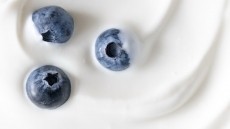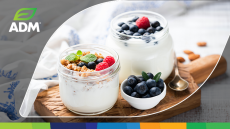Danisco invests in pilot ice cream making technology
to produce high-quality, low-fat ice-cream, to enable testing of
ingredients using the same systems as its customers use.
According to Danisco, low temperature extrusion results in a finer structure, better mouthfeel, and creamier texture than has previously been possible. It does this by freezing the product down to -12 to -15 degrees (compared to usual freezing temperatures of around -7). This results in better air distribution, smaller ice crystals, and a better, smoother texture. Appropriate texture and mouthfeel is something that is particularly hard to achieve in low fat frozen desserts, so this will be the pilot equipment's main use. Even when ice cream products are positioned on a healthier platform they still come with indulgent cache, and consumers do not want to feel they are compromising on a treat. Finn Hjort Christensen, group manager, ice cream application at Dansico Braband, told FoodNavigator.com that the company has invested in the technology since more and more ice cream makers are now using it on manufacturing scale. As a major ingredients supplier to the ice cream industry, Danisco identified a need to test its emulsifier and stabiliser systems, sold under the Cremodan brand, using the same techniques as its customers. In addition to the benefits for low fat products, Christensen said that using low temperature extrusion method can allow for a reduction in high cost commodity ingredients. Commodities like dairy ingredients and vegetable oils play a role in giving a product the correct texture, but manufacturers can reduce their reliance on them if the texture is provided by other means. Christensen said that manufacturers considering investing in the technology for themselves can also conduct tests using Danisco's pilot version. There has already been considerable interest in using the pilot technology, not only from customers in Europe but also from Asia. The equipment is located in Danisco's testing laboratory in Braband, and cost the company between DKK800,000 and 900,000 (c €120,000), including installation. Major players like Nestle and Unilever are understood to have been using low temperature extrusion systems for some time already. Nestle has even translated the innovation for consumer recognition, calling products made this way 'Slow Churned' ice cream, and selling them under its Dreyer's brand. As for Danisco, it prides itself on being able to identify trends in finished food and beverage products ahead of the game, so it can work on ways to help its customers work on appropriate products. Every month, it comes up with a new ice cream concept that it believes fits with consumer demands. This month's concept takes the healthier eating idea a step further: probiotic and prebiotic yoghurt that contains Danisco's Howaru Rhamnosus bacteria, claimed to provide a boost for the immune system, and Litesse, a prebiotic low calories, low-glycaemic carbohydrate.











